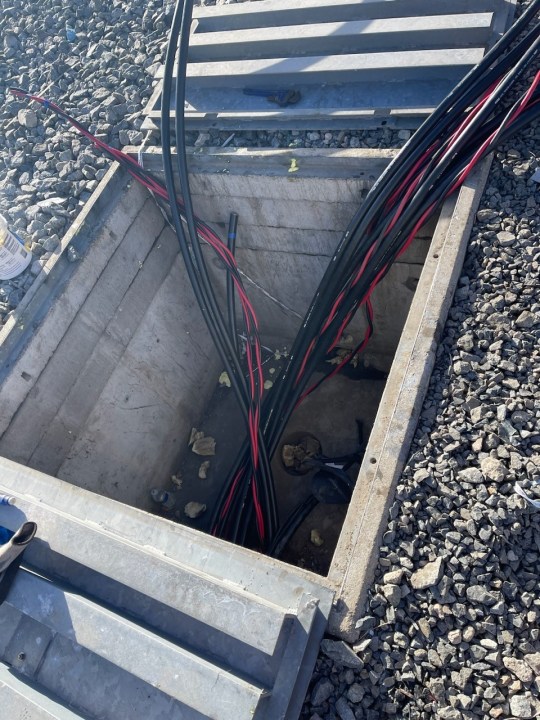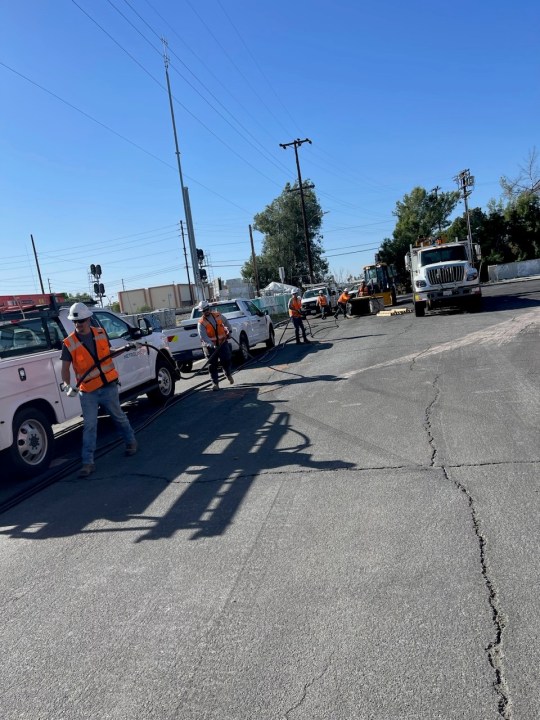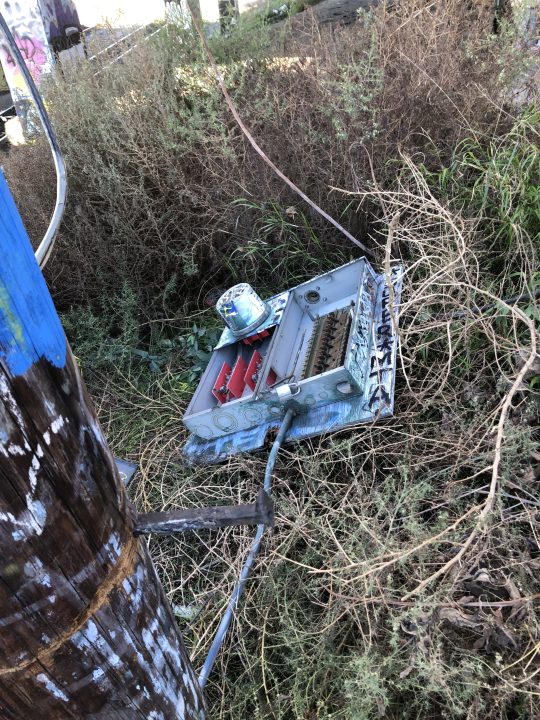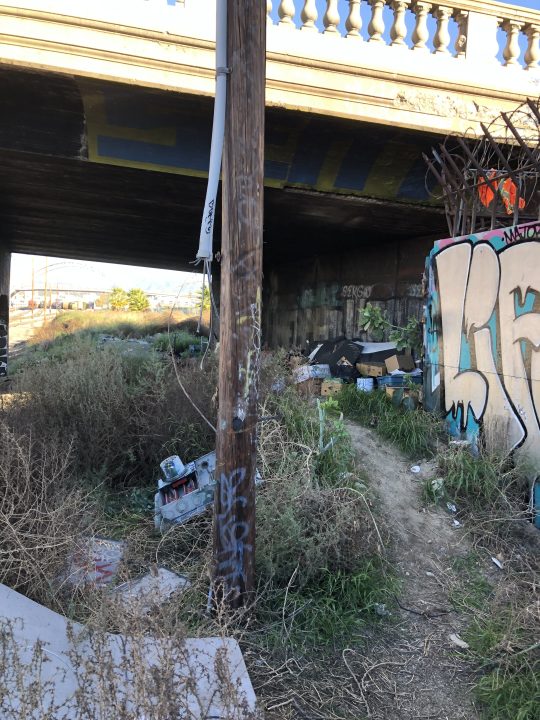Copper thefts across Southern California have been a growing and highly publicized problem over the last several years, causing millions in untold damage across the region.
One of the biggest victims of these crimes is the passenger rail service Metrolink, whose system of tracks, signals and gate crossings span more than 540 miles between Los Angeles, Orange, Riverside, San Bernardino, Ventura and San Diego counties.
“What has been occurring with us is people along the row and various locations, mainly in LAPD [jurisdiction], Van Nuys area and Santa Ana area in Orange County, is where the wires being cut, small sections are being removed and, we believe, sold to local reach recycling centers for a quick turnaround,” said Capt. Abi Ben-Sahile of the Los Angeles County Sheriff’s Department, which provides law enforcement services across the Metrolink system.
The thefts vary in both complexity and sophistication, with some appearing to be the work of organized crews, while most others are simply crimes of opportunity. The majority of thefts take place during the early morning, officials said.
The copper wires can be found inside secured houses and in poles, but the biggest target has been the wire that runs along the tracks themselves.
Metrolink says that any damage to those wires can cause system-wide issues that affect both train traffic, as well as the often overlooked impact on vehicle traffic.
“The copper wire is used on various Metrolink railroad systems like the crossings, the signals … they are integral in the operation of the train signals and crossings going up and down,” said Luis Carrasquero, deputy chief operations officer with Metrolink. “So when the copper wires are vandalized or removed from the system, then it causes train delays, impacts of vehicular traffic and it’s a cascading effect.”
The copper is used to detect train movement, which will then in turn activate the gate arms at railroad crossings. If the system detects damage to the signal system, those gates “fail-safe” and lower, meaning drivers might find themselves stuck until crews are able to conduct repairs that cost anywhere between $5,000 to $100,000.
If the damages are significant, Metrolink will then need to re-qualify and re-test the system to ensure it’s up to code and in working order.
“It takes a lot of time and coordination to be able to get that much time uninterrupted to be able to qualify the system,” Carrasquero said.
Amtrak and freight operators Union Pacific and BNSF share the same tracks and are also forced to wait out the repairs, causing widespread service interruptions.
Metrolink says disabled crossings may also lead to drivers trying to go under or drive around the gates, which is both illegal and extremely dangerous.
One of the biggest challenges for Metrolink and the Sheriff’s Department is the ease of which the system can be accessed across the hundreds of miles of track. The tracks are open to the public, not fenced off, and vandalism can take place almost anywhere.
Metrolink has taken steps to curb the thefts, including making the crucial wires harder to see and devising new strategies to minimize the downtime and damage that can be caused by vandals.
As for the Sheriff’s Department, combatting copper thefts includes public education efforts and traditional police work, but preventative action can be difficult.
“The difficulty is the randomness of how these things happen,” Ben-Sahile said. “It’s difficult to just put a deputy on every 10-20 feet to look for wire theft, it’s very hard. So what we’ve done is we’ve increased our patrols along the areas that are affected … looking only for signs of wire theft.”
Signs of theft include evidence of fires which are used to melt through the special protective coating that covers the thick cords of copper unique to the train system.

LASD has also expanded its nighttime patrols, added security cameras in some places and has explored conducting undercover operations.
Detectives are also providing additional resources to pinpoint the areas where crimes are occurring most frequently and investigating the recycling centers to make sure they aren’t purchasing the stolen copper — which is a felony.
“We are bringing awareness to the recycling centers to remind them that if someone shows up with burned copper wire, copper wire that the casing is burned off, that’s not something that’s normal, that’s not something that looks like excess items that need to be recycled,” Ben-Sahile said. “That’s personal property, that belongs to either an organization or a person and it was obtained illegally.”
Thieves can be hit with felonies for stealing anything worth more than $900, and recycling centers buying the stolen material risk prison time and losing their business licenses, he said.
Metrolink, the Sheriff’s Department and other stakeholders meet weekly to discuss enforcement strategy and officials say they’ve learned a lot from the Los Angeles County Metropolitan Transportation Authority, aka LA Metro, which has been at the forefront of these theft mitigation efforts.
Ultimately though, Metrolink hopes that the public will chip in to reduce these crimes by reporting suspicious behavior to its security operations center.
“It doesn’t just affect Metrolink riders, it affects the community,” said Christopher Gutierrez, public relations manager for Metrolink. “It’s very unsafe and illegal … we’re trying to keep the public safe and avoid frustration for motorists at these locations when they occur.”
Anyone who witnesses suspicious behavior near railroad tracks or suspects that a recycling center is purchasing stolen copper can contact Metrolink’s Security Operations Center at 866-640-5190.

















